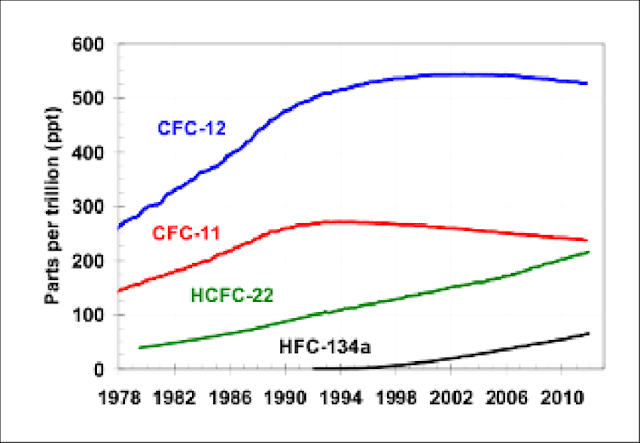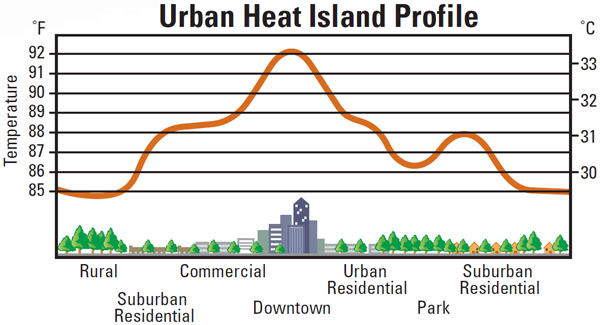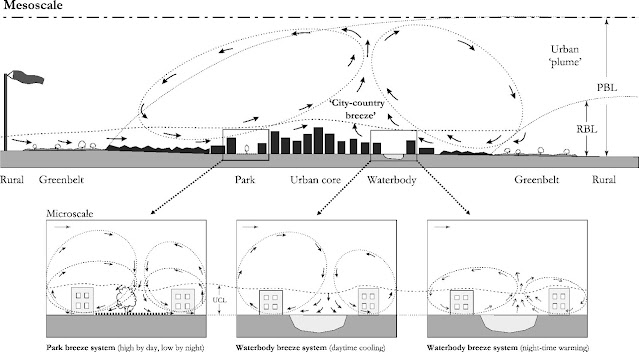After Heat Wave - Still No Sustainability
After recent significant heat waves and their consequent outcomes in the weather trends, there is still a need for the adoption of sustainable measures. This post will focus on the effects of human activities on the energy cycle of the earth.
The most immediate fix is the best option but for the short term only. Now, the time has come to achieve the long-term goals by imposing stringent policies.
Source: University of Bristol
Recent studies estimate that the world will add about 1 billion Air Conditioners (ACs) by the end of 2030, and projected to nearly double before 2040. This expansion of AC coverage threatens to worsen the crisis it's responding to, as most ACs still use refrigerants like Hydro Fluoro Carbons (HFCs), which can have 1,000 times the warming potency of Carbon Dioxide (CO2). Further, various studies estimate that if the world fails to lower, the dependence on HFCs could result in half a degree Celsius of warming by the end of the century, which is an enormous contribution to a rise that would trigger deadlier storms, droughts, and, more heatwaves.
Source: Isikwue, B. & Audu, Moses. (2014). Variational Trends in the Concentration of Greenhouse Gases and its Impacts on the Global Climate. Inter. Journal of Sci. and Tech. Vol. 3 No. 3.
However, the nations where demand is growing fastest remain deeply reliant on coal-fired power, and most people can only afford the cheapest, most energy-inefficient units. Moreover, wealthier, more temperate countries have tightened regulations on ACs, requiring better energy efficiency and less-toxic coolants, which adds to the cost of units, making those kinds of measures unaffordable.
The pressure from International climate bodies on developing countries to lower their carbon footprint seems unreasonable, as developing countries like India still contribute far less to global emissions than developed countries like the U.S., where nine out of ten people have access to AC.
However, the U.S. Senate recently agreed to reduce HFC consumption by 85% within 15 years, which is still a long way to go.
In 2016, more than 170 nations agreed to start phasing out HFCs in 2019, with wealthy industrial countries required to make the first deep cuts. As of now, the alternatives are often more expensive. That's prompted opposition even in developed countries.
One can point out the hampering economic growth due to regulations designed to slow down climate change. The thin layer of the problem is skim by utilizing cleaner sources of power. The main problem of refrigerant is still underlying. Hence, there is a need for more efficient and economical ACs.
The need for ACs further increased by the Urban Heat Island (UHI) effect, known as an increase in the temperature of dense urban areas compared with their suburban or rural surroundings.
The intensity of the UHI effect can go up to as high as 11°C and is often more pronounced at night, exposing urban residents to higher thermal stress, and increasing mortality and morbidity, especially amongst low-income and vulnerable urban populations. The heatwave amplifies the said thermal stress.
As per my experience, reducing short and long-wavelength absorption by altering the reflectance properties of roads and buildings should be part of an immediate action plan.
The policymakers should keep encouraging green infrastructure like green roofs, green facades, and parkland expansion as a long-term plan, as these green infrastructure also brings ecosystem services with co-benefits of carbon sequestration, promoting biodiversity, improved air quality, and standard of living.
Increasing the efficiency of ACs and restricting the utilization of construction materials like concrete, asphalt, and glass within a couple of years only seems to be a sustainable step to constrain global warming.





Comments
Post a Comment